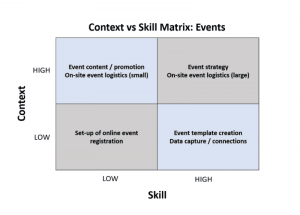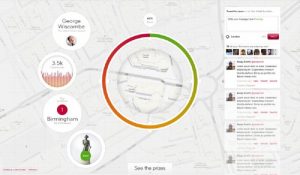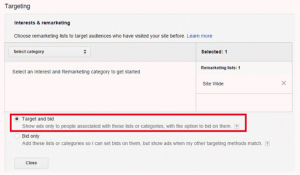Several recent conversations with new entrepreneurs as well as veteran business owners have been on the topic of entering a new market or new customer segment. In each instance, a key concern was a strategy for mitigating risk of entry. While each person recognized there is always some degree the risk, they wanted to explore how to minimize this risk.
We discussed the importance of having clarity based on data regarding customer needs and wants and the degree of competition.We also mentioned the importance of conducting research to validate the market, estimating the cost of entry, defining and establishing a unique and compelling value proposition, and developing a go-to-market strategy and plan.
Strategy is crucial to mitigating risk. There are often multiple strategies to consider and evaluate. Armed with insights and the right strategy, you increase the odds of success, save money and improve your speed to market.
The Market’s Ecosystem Serves as a Good Starting Point
“Where is a good starting point for developing the new market entry strategy?” reflects the question we’re most often asked. We always reply with a counter question, “What do you know about the ecosystem of the market you want to enter?”
Every market has an ecosystem.
Let’s quickly define what we mean by an ecosystem so we’re on the same page.
The dictionary defines an ecosystem as “a community that works together with its environment, functioning as a unit.” We can apply this definition to the business environment. And describe a business ecosystem as the network of independent entities or members who function together to make up a market community.
Using this description, it would mean that the market would be made up of buyer, seller, influencer, channel and supplier members. Buyer members would be various types of customers. Seller members would include you and all of your competitors, both direct and indirect. Analysts, members of the media, trade associations, etc. are influencer members. Entities that provide products to you, your competitors and to your customers are among supplier members. Channels would be those that help ease the delivery of the seller’s offer to buyer.
By mapping all the ecosystem members and how they relate to each other, you can identify where there are market entry opportunities.
For example, becoming or creating an affiliate program, illustrates a channel strategy. An ecosystem map would help identify potential affiliates, that is, people who are connected to the buyer members who would find it beneficial to offer a company’s product to their buyers.
Ecosystem maps can also help identify potential niches or partners who have access to a niche. It’s a smart tool because it helps you see who is and isn’t connected to each other. With an ecosystem map you can see which markets/buyers are connected to which competitors, to which influencers and to each other. The map can help stratify the buyer member for example into first, second and third tier markets or see market clusters. It also provides insight in where you can build a more targeted influencer or peer engagement strategy. You can see where there are opportunities to overcome weaker competitors.
If you are trying to enter a new market or new customer segment, we encourage you to create an ecosystem map to help you navigate and identify opportunities for growth. It helps mitigate the risk. Like any model or map, the challenges are often in constructing the framework and acquiring the data.
Business & Finance Articles on Business 2 Community(66)








